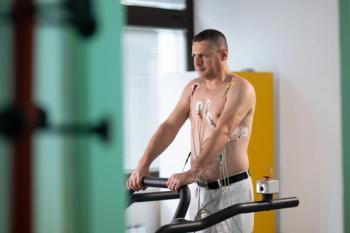
Analysis Finds HIV Therapy Biktarvy Associated With Cost Savings Compared With Most Regimens
The combination therapy lets patients take a single pill once a day for treatment, which leads to improved adherence. Results of the study were presented at the Academy of Managed Care Pharmacy Nexus 2018 in Orlando, Florida.
Since the introduction of antiretroviral therapy in the mid-1990s, the life expectancy for patients with the human immunodeficiency virus (HIV) has soared. In 1996, a 20-year-old person with HIV could expect to live to age 39; today, the life expectancy is about 78. However, long-term treatment with some antiretroviral therapy (ART) has been associated with specific health risks. According to
As people with HIV live decades with the disease, drug developers have sought new therapies that reduce these long-term effects. In February 2018, the
Stage 3 CKD is characterized by moderate chronic renal insufficiency, where glomerular filtration rate indicates 40% to 59% of kidney function. Patients start to experience fluid retention, pain in the back, trouble sleeping, and fatigue.
The analysis compared B/F/TAF with 5 other regimens:
- elvitegravir/cobicistat/emtricitabine/tenofovir alafenamide (E/C/F/TAF)
- elvitegravir/cobicistat/emtricitabine/TDF (E/C/FTC/TDF)
- dolutegravir + tenofovir DF / emtricitabine (DTG + FTC/TDF)
- dolutegravir + emtricitabine/tenofovir alafenamide (DTG + FTC/TAF)
- abacavir/lamivudine/dolutegravir (ABC/3TC/DTG)
Compared with the FTC/TDF—based regimens, B/F/TAF reduced the rates of Stage 3 CKD events 34.6%-34.9%. Further, B/F/TAF reduced rates of cardiovascular disease by 13.2.% compared with ABC/3TC/DTG. Patients who started the B/F/TAF regimen showed stronger treatment persistence, with an average median time to switching to another regimen or death of 6.7 months in treatment-naïve patients and 9.4 months in previously treated patients.
Average annual cost savings associated with the start of treatment with B/F/TAF in all patients with HIV-1 was $1.7 million per 1000 treated patients; this was driven by a projected reduction in treatment failure, and renal and cardiovascular events.
The B/F/TAF regimen was projected to yield medical and pharmacy savings relative to 4 of the 5 regimens on an annual basis: it saved $1.3 million compared with E/C/FTC/TDF, $3.3 million compared with DTG + FTC/TDF, $1.4 million compared with ABC/3TC/DTG, and $2.8 million compared with DTG + FTC/TAF. The E/C/F/TAF regimen, sold by Gilead as Genvoya, produced $500,000 more in annual savings.
Gilead Sciences funded the study.
Reference
DeJesus E, Folse H, Altice F. A cost-consequence analysis of bictegravir/emtricitabine/tenofovir alafenamide compared with other antiretroviral regimens in a simulated model of adult HIV patients. J Manag Care Spec Pharm. 2018;24(10-a). Abstract B6.
Newsletter
Stay ahead of policy, cost, and value—subscribe to AJMC for expert insights at the intersection of clinical care and health economics.













































